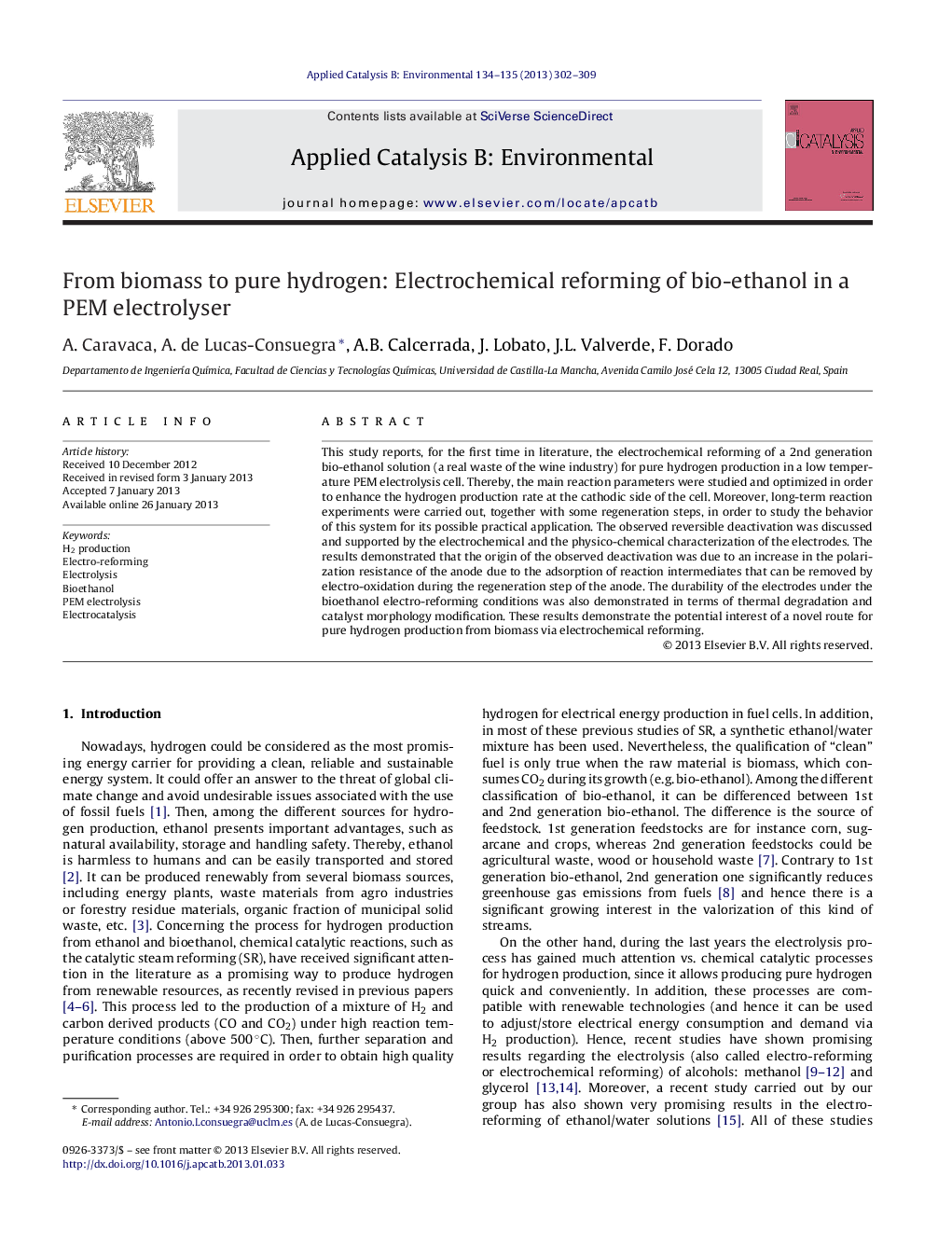| Article ID | Journal | Published Year | Pages | File Type |
|---|---|---|---|---|
| 45795 | Applied Catalysis B: Environmental | 2013 | 8 Pages |
This study reports, for the first time in literature, the electrochemical reforming of a 2nd generation bio-ethanol solution (a real waste of the wine industry) for pure hydrogen production in a low temperature PEM electrolysis cell. Thereby, the main reaction parameters were studied and optimized in order to enhance the hydrogen production rate at the cathodic side of the cell. Moreover, long-term reaction experiments were carried out, together with some regeneration steps, in order to study the behavior of this system for its possible practical application. The observed reversible deactivation was discussed and supported by the electrochemical and the physico-chemical characterization of the electrodes. The results demonstrated that the origin of the observed deactivation was due to an increase in the polarization resistance of the anode due to the adsorption of reaction intermediates that can be removed by electro-oxidation during the regeneration step of the anode. The durability of the electrodes under the bioethanol electro-reforming conditions was also demonstrated in terms of thermal degradation and catalyst morphology modification. These results demonstrate the potential interest of a novel route for pure hydrogen production from biomass via electrochemical reforming.
Graphical abstractFigure optionsDownload full-size imageDownload as PowerPoint slideHighlights► A bioethanol PEM electrolysis cell was developed for pure H2 production. ► The main reaction conditions were optimized in order to maximize the H2 production. ► The system was able to be in situ regenerated after some polarization cycles. ► EIS characterization demonstrated the nature of the cell deactivation/regeneration. ► XRD demonstrated the unchanged morphology of the electrodes after the cell operation.
